ITR-7
1.WHAT IS ITR & WHAT ARE THE TYPES OF INCOME TAX RETURNS?
ITR stands for Income Tax Return, it is a form through which the amount of income earned, and taxes paid by the person during a particular year is communicated to the Income Tax Department.
Types of Income Tax Return
• ITR 1(also known as SAHAJ) for individuals.
• ITR 2 for individuals having capital income.
• ITR 3 for individuals having business income.
• ITR 4 for individuals declaring income under presumptive scheme.
• ITR 5 for llp & partnership firms.
• ITR-7 for ngo, trust, societies claiming benefits of 12a & 80g.
.
2.WHO IS ELIGIBLE TO FILE ITR-7?
Person who is required to furnish return under following sections is eligible to file ITR-7:
Note:
The person whose income is unconditionally exempt under various clauses of section 10, and who are not mandatorily required to file ITR under section 139, may use ITR-7 for filing their return.
3.WHO ARE NOT ELIGIBLE TO FILE ITR-7?
ITR-7 cannot be filed by: –
• Partnership Firms/ LLP.
• Trust, Ngo, Society not claiming benefits of 12A/ 80G.
• Person claiming benefits under Section 10(20), Section 10(23AA), Section 10(23AAB), Section 10(23BB), Section 10(23BBA), Section 10(23BBC), Section 10(23BBE), Section 10(23BBG), Section 10(23BBH), Section 10(23C)(i), Section 10(23C)(ii), Section 10(23C)(iii), Section 10(23C)(iiia), Section 10(23C)(iiiaa), Section 10(23C)(iiiaaa), Section 10(1023C)(iiiaaaa), Section 10(25)(i), Section 10(25)(ii), Section 10(25)(iii), Section 10(25)(iv), Section 10(25)(v), Section 10(25A), Section 10(26AAB), Section 10(26B), Section 10(26BB), Section 10(26BBB), Section 10(44).
4.TYPE OF INCOME THAT CAN BE SHOWN IN ITR-7?
Person eligible to file the ITR-7(As mentioned above), can show income from all the heads in this form.
.
5.DOCUMENTS REQUIRED TO FILE ITR-7?
Following documents are required while filing ITR-7
• Interest certificates from banks. Post office, Nbfc etc.
• Audit under section 10BB.
• Receipts & Payments account.
• Income and expenditure account.
• 12A/80G registration details.
NOTE:
Since ITR’s are annexure less forms the above-mentioned documents are not to be attached with the ITR Form. However, one needs to keep these documents as it can be demanded by the tax authorities during assessment, inquires.
.
6.HOW TO FILE ITR-7?
By following the steps mentioned below one can file ITR-7

.
• Click on login and enter your pan & password to login to the income tax portal.
.
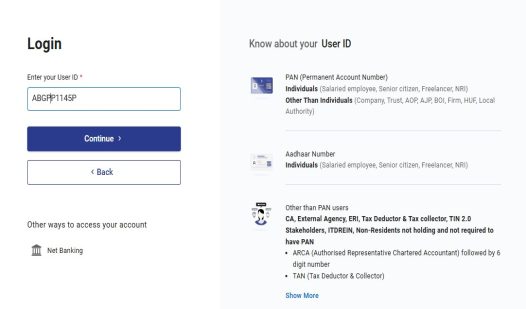
.
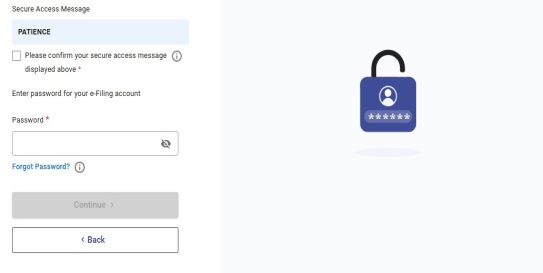
• Click on e-file, then click on file income tax returns.
.
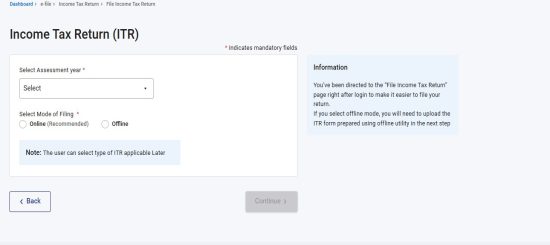
• Select the assessment year for which you want to file ITR and select the mode of filing (here we are telling about online filing procedure)
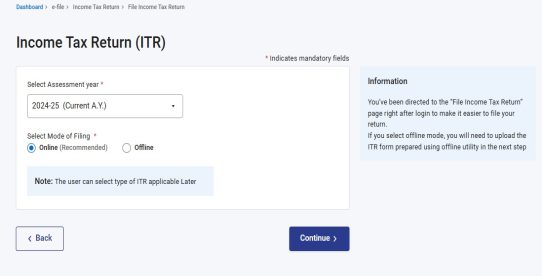
• The next step is to select the status of the entity for which you are filing ITR.
.
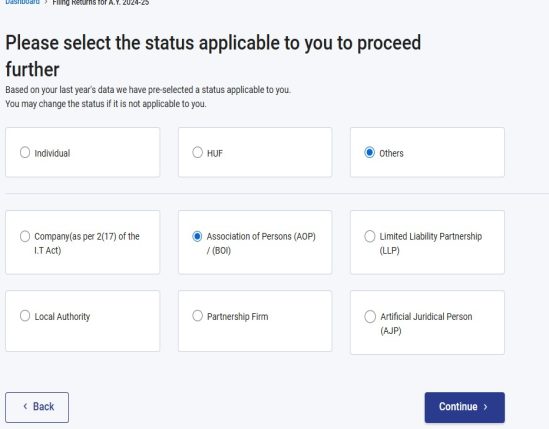
• Click on continue and select the ITR form i.e. ITR-7 in our case.
.

• Select the schedules that are applicable to you from the given schedules.
.

• The next step is to fill the basic details, in this the basic details are divided into 2 parts, first part contains details like selecting the section under which return is to be filed, date of registration or approval under the Income Tax Act & basic contact details. In the second part one has to fille details like Audit Information & Members information.
.
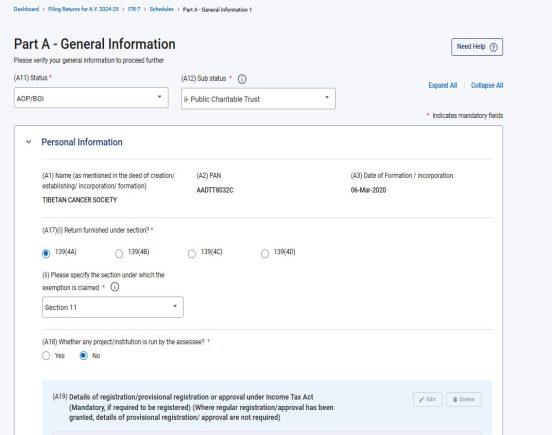
.
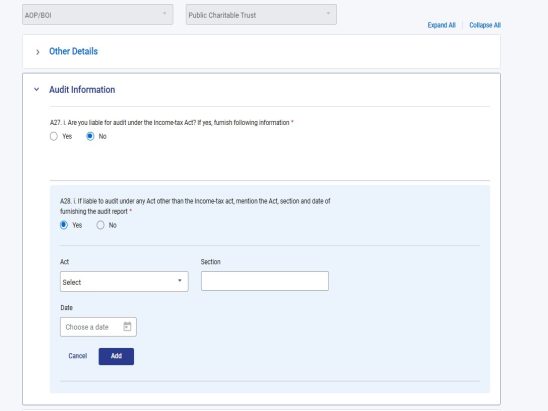
• The next step is to fill Schedule I, wherein one need to fill details regarding amount accumulated/ set off for future use.
.
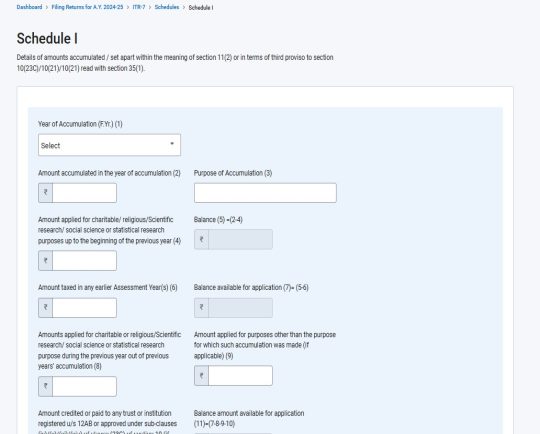
• The next step is to fill Schedule IA which contains details of accumulated income taxed in earlier years.
.
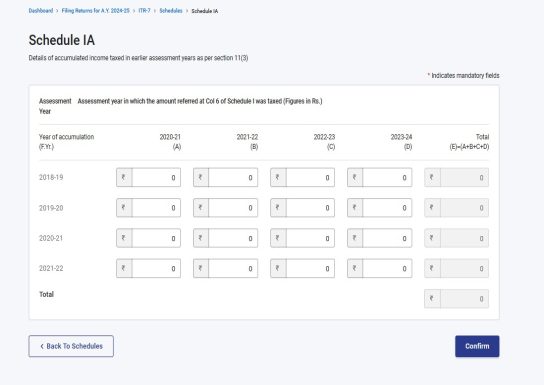
• Next step is to fill Schedule D, wherein one needs fill details of deemed application of income.
.
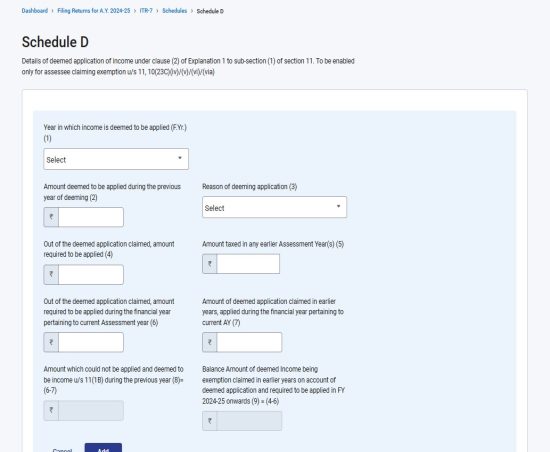
• Next step is to fill the Schedule J, wherein one need to fill details of funds and investment as on last day of previous year.
.
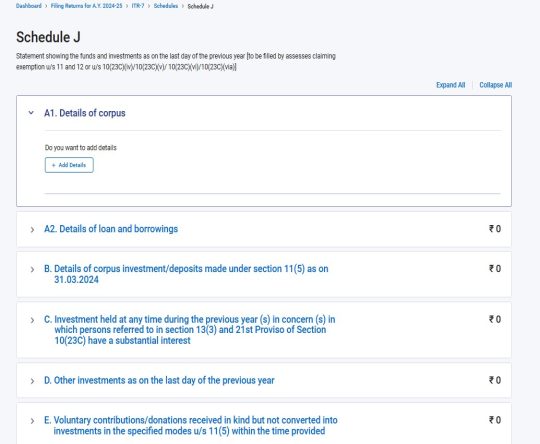
• After the investment and funds schedule the next step is to fill Balance sheet.
.
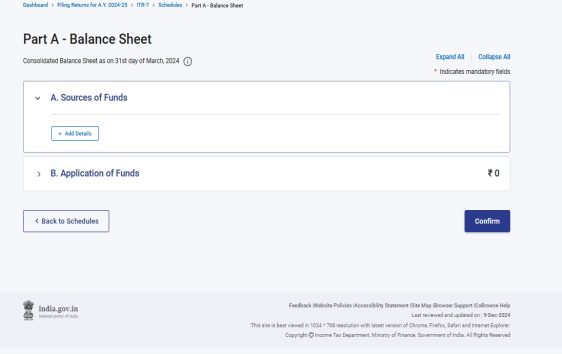
• Next step is to fill the aggregate income received during the previous year excluding voluntary contributions in Schedule AI.
.
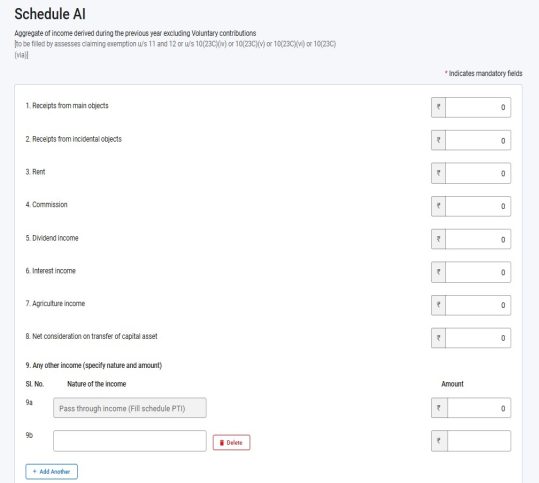
• Next step is to fill the amount applied to stated objects of the trust in Schedule A.
.
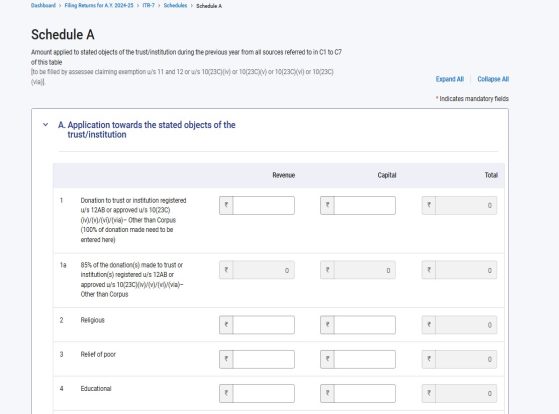
• The next two steps are to fill capital gains income and any other income received by trust in the previous year.
.





• The next step is to verify the details of taxed paid by you including the TDS deducted and TCS collected from you.
• The next step is to click on total tax liability, wherein the system will automatically calculate your tax liability and if taxes paid is greater than the tax liability you will be entitled to get a refund and if the tax liability is more than the taxes paid then pay the remaining tax liability.
.
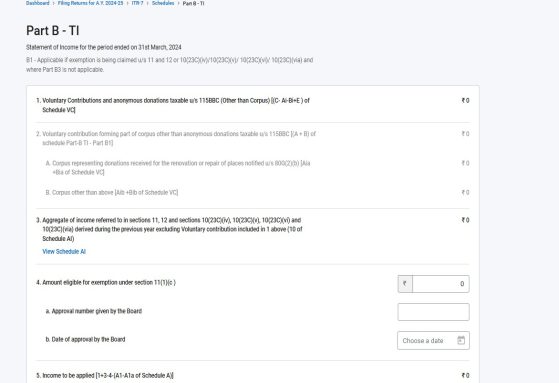
.
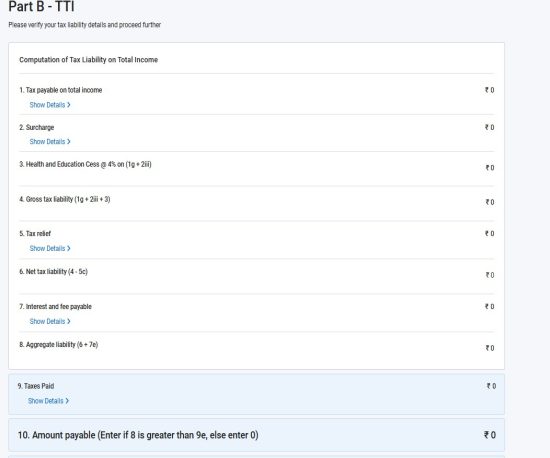
• After that click on preview return and verify the inputs provided by you
.

• Click on proceed to validation, if any error occurs clear the error and click on proceed to verification.
.
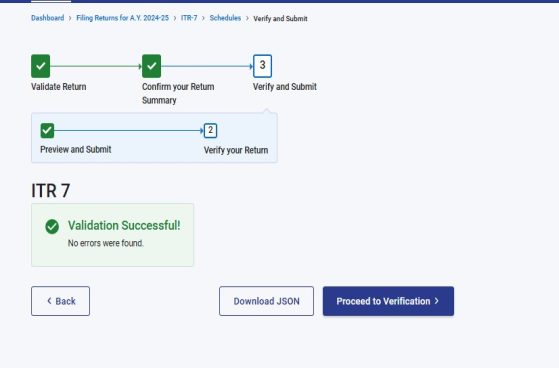
• The last step is to verify the return prepared you can verify the return through following methods: –
I.Through Aadhar OTP of Author/ Director/ Member.
II.Through digital signature (DSC) Author/ Director/ Member.
III.Through Net banking of Author/ Director/ Member.
IV.Through pre validated bank account Author/ Director/ Member.
V.Through pre validated demat account Author/ Director/ Member.
VI.Through Net banking Author/ Director/ Member.
VII.By sending signed physical copy to the Income tax department, Bengaluru (signed by Author/ Director/ Member).
.
.
.
.





























Add a Comment